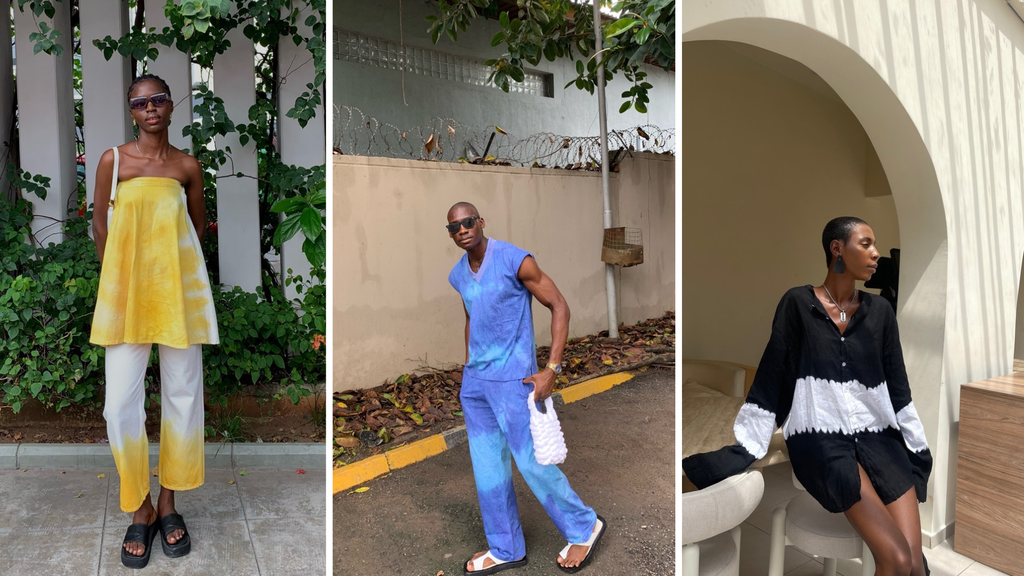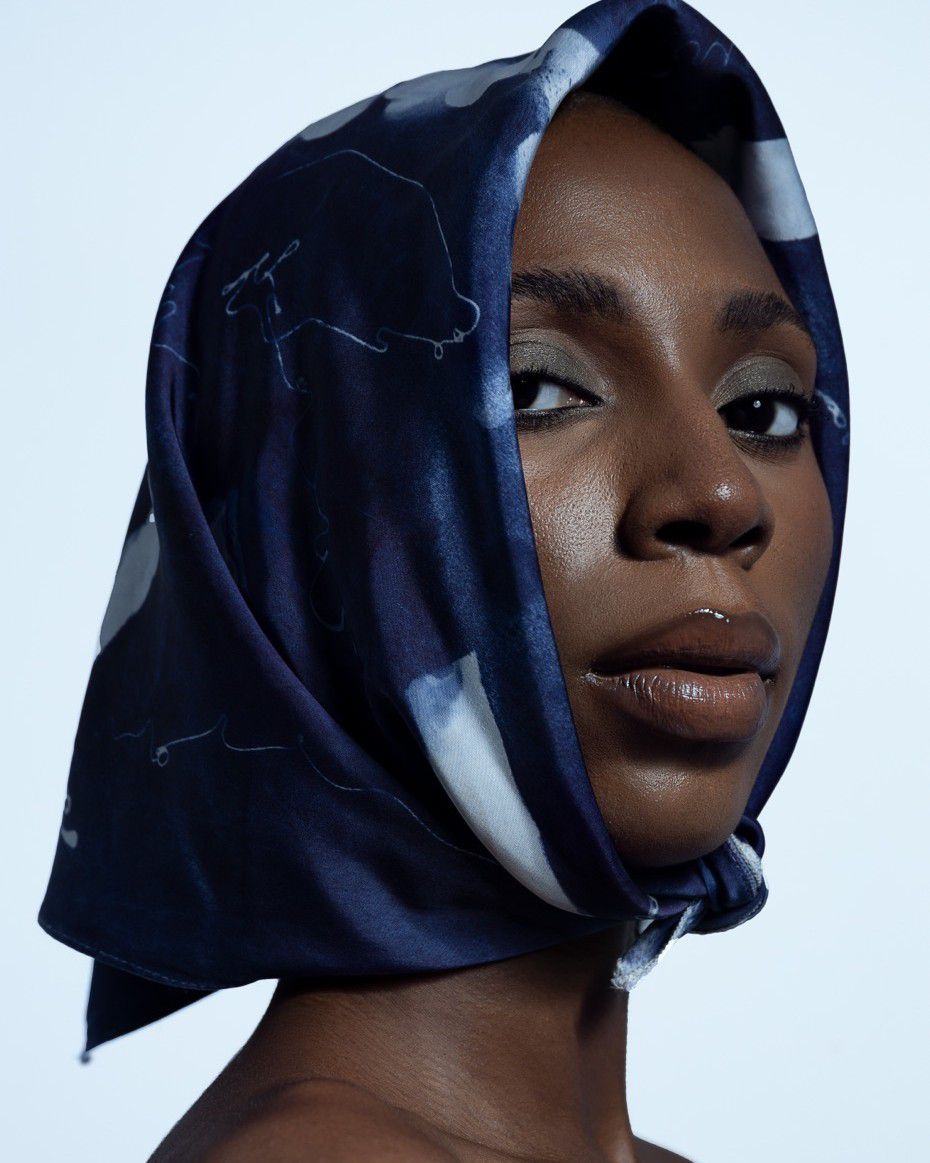How Rimac’s Tie-Dyed Pieces Transform Everyday Style
)
When was the last time you felt truly connected to a piece of clothing—not just because it looked good but because it told a story? If you're like many of us, you probably want more from your fashion choices. You want style, sure, but something deeper that reflects who you are.
When asked what initially drew the brand to upcycling, Rita MacDonald explained, “As a textile designer, I wanted to do more than just produce fabric. My journey into upcycling began with a desire to remedy the discarding of beautiful clothing as a result of design obsolescence while still staying innovative in tie-dye. This drive, paired with a commitment to sustainability, led to the birth of Rimac.”
This ethos has clearly shaped Rimac’s identity. The brand is dedicated to creating functional and contemporary tie-dye and batik designs, all crafted using eco-friendly dyes and organic materials. It’s fashion with purpose—pieces that carry the stories of the past while speaking to a more thoughtful future.
“Choosing colour palettes is a blend of inspiration and emotion,” Rita told Pulse Picks. “I draw from nature, art, and socio-cultural elements, allowing personal experiences to influence the tones and patterns. I focus on the mood I want to convey, balancing vibrant colours with complementary shades for visual harmony.”

A Day in the Studio
Designing these intricate, hand-dyed pieces is no small feat. At Rimac’s studio, the process is a delicate dance of creativity and precision. “A typical day at the studio begins with reviewing our stock of materials and pieces,” they said. “Once I finalize a concept, I proceed to applying the dyes, experimenting and adjusting patterns as needed until I achieve the desired results.”
It's an ongoing process of exploration and collaboration, with feedback from the team playing a key role in refining each design. The attention to detail is evident in every finished piece.
No two designs are alike, thanks to the nature of the hand-dyeing process. This uniqueness is part of what makes the brand special, though it doesn’t come without its challenges. I asked if they ever encounter difficulties in achieving the exact look or pattern they envision.
“For every design we reproduce, we infuse a unique element to maintain individuality. There’s always a distinct twist in every piece, reflecting our commitment to bespoke craftsmanship.”
Sourcing from Local Markets
Part of Rimac’s upcycling efforts involves sourcing materials from local markets in and around Lagos—a task that’s both rewarding and, at times, unpredictable.
“My team and I explore local markets to source garments and fabrics that resonate with our customers,” they explained. “Cotton, silk, and linen are our go-to fabrics, chosen for their beauty and environmentally friendly qualities. But our work goes beyond simply finding the right materials. We focus on giving garments a second life, often incorporating tie-dye techniques to transform old clothes into fresh, stunning pieces.”
However, sourcing isn’t always straightforward. “Once, we had over three dozen orders for a particular fabric, and sourcing the material took weeks. It’s a reminder of how unpredictable—and rewarding—working with local markets can be.”
Tie-dye has a long history, but Rimac’s designs resonate with today’s fashion-conscious consumer, for both men and ultra-feminine women, this is seen in the styles spanning dresses, shirts and two-piece sets. I was curious how they approached such a traditional technique with a modern twist.
“I blend traditional and non-traditional techniques with modern design elements,” they said. “Through innovative patterns and bold colour combinations, I aim to captivate today’s fashion enthusiasts. I provide a variety of silhouettes, patterns, and color palettes to accommodate diverse tastes. By creating versatile pieces that can be styled in multiple ways, these designs allow women to showcase their individuality and uniqueness.”
Scarf 2.0 Collection
Scarves, one of Rimac’s standout collections, are more than just accessories—they’re personal expressions of style, capable of transforming any outfit. “When I design my scarves, I envision them becoming integral pieces in people’s wardrobes,” they explained. “These scarves aren’t just accessories; they are canvases, waiting to be brought to life by the creativity of their wearer.”
Rimac’s scarves collection dropped on August 25th, the collection flaunts their signature hand-dyed scarves in vibrant colours and unique patterns.
Whether worn as a headwrap, neckerchief, or even cinched around the waist, Rimac’s scarves are a testament to the power of versatility. “The beauty of these scarves lies in their ability to be endlessly versatile—transforming with every twist, fold, and drape.”
Finally, when asked if there was a particular piece from the scarves collection that holds special meaning, the designer pointed to the Cosmos Print. “The Cosmos Print was born from a moment of deep reflection, inspired by the boundless beauty of the universe. I wanted to capture the mysterious duality of space—its vast emptiness and yet its overwhelming fullness.”

The scarves come in three sizes, and is priced between ₦28,000 - ₦45,000 and is made from satin silk. Where to Buy: Shop Rimac.
Creating the Cosmos Print was an artistic journey marked by experimentation and discovery. “When the final piece came to life, it felt like a small piece of the universe had been captured within the fabric.” Each Cosmos Print, much like the universe itself, is unique—a wearable reminder of the beauty found in both emptiness and fullness.
Through its thoughtful designs and unwavering commitment to sustainability, Rimac is proving that fashion can be both beautiful and responsible. From vibrant scarves to upcycled garments, every piece tells a story—one of creativity, care, and a deep respect for both tradition and the future.
)
)
)
)
)
)
)